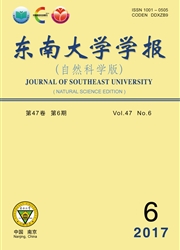

 中文摘要:
中文摘要:
目的将孤立并且描绘土生土长的 algicidal 细菌和他们对 Microcystis aeruginosa,紧张 TH1, TH2,和 FACHB 905 活跃的水藻细胞溶解混合物。细菌用 Biolog 被识别的方法自动化了微生物引起的鉴定系统和 16S rDNA 顺序分析。水藻细胞溶解混合物被硅石胶化列层析和反向阶段的高效液体层析孤立并且净化。他们的结构被原子磁性的回声(NMR ) 和 Fourier 变换证实红外线(英尺红外) 光谱学。水藻细胞溶解活动用显微镜学被观察。水藻细胞溶解细菌 LTH-2 从泰胡湖孤立的结果作为 Serratia marcescens 被识别。紧张 LTH-2 分泌了作为 prodigiosin (C20H25N3O ) 识别的红颜料,它与海藻的紧张 M 显示出强壮的 lysin 的活动。以一种集中依赖者方式的 aeruginosa TH1, TH2,和 FACHB 905。有海藻的紧张的 prodigiosin 的 50% 禁止的集中(IC50 ) 是 4.8 (
 英文摘要:
英文摘要:
Objective To isolate and characterize indigenous algicidal bacteria and their algae-lysing compounds active against Microcystis aeruginosa, strains TH1, TH2, and FACHB 905. Methods The bacteria were identified using the Biolog automated microbial identification system and 16S rDNA sequence analysis. The algae-lysing compounds were isolated and purified by silica gel column chromatography and reverse-phase high performance liquid chromatography. Their structures were confirmed by Nuclear Magnetic Resonance (NMR) and Fourier Transform infrared (FT-IR) spectroscopy. Algae-lysing activity was observed using microscopy. Results The algae-lysing bacterium LTH-2 isolated from Lake Taihu was identified as Serratia marcescens. Strain LTH-2 secreted a red pigment identified as prodigiosin (C20H25N30), which showed strong lytic activity with algal strains M. aeruginoso TH1, TH2, and FACHB 905 in a concentration-dependent manner. The 50% inhibitory concentration (ICs0) of prodigiosin with the algal strains was 4.8 (±0.4)×10^-2 μg/mL, 8.9 (±1.1)×10^-2μg/mL, and 1.7 (±0.1)×10^-1 μg/mL in 24 h, respectively. Conclusion The bacterium LTH-2 and its pigment related to damage of cell membranes. The bacterium for regulating blooms of harmful M. aeruginosa. had strong Microcystis-lysing activity probably LTH-2 and its red pigment are potentially useful
 同期刊论文项目
同期刊论文项目
 同项目期刊论文
同项目期刊论文
 Electricity generation from fermented primary sludge using single-chamber air-cathode microbial fuel
Electricity generation from fermented primary sludge using single-chamber air-cathode microbial fuel 期刊信息
期刊信息
